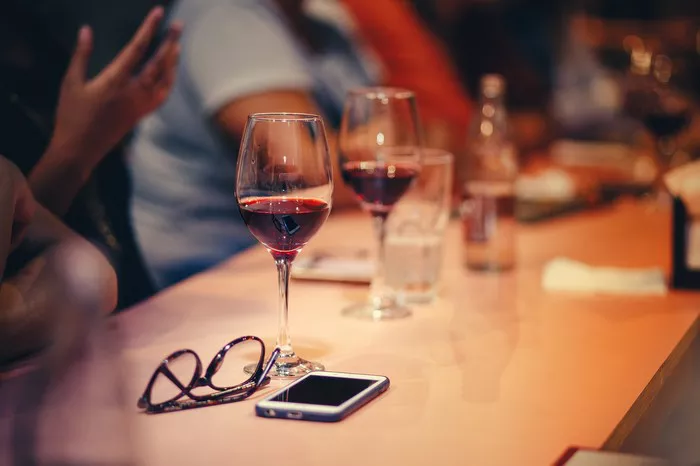Sparkling wine, with its effervescence and celebratory charm, has a long history of delighting palates worldwide. While Champagne from France is perhaps the most famous sparkling wine, many regions produce their own versions of bubbly magic. In this article, we will uncover the art of making sparkling wine from grapes, offering a glimpse into the meticulous process that transforms still wine into a sparkling masterpiece.
1. Grape Selection and Harvest
Quality Grapes: The journey to crafting sparkling wine begins with selecting high-quality grapes. Common grape varieties used include Chardonnay, Pinot Noir, and Pinot Meunier for Champagne-style sparkling wines.
Timing: Grapes are harvested slightly earlier than those for still wine to maintain higher acidity levels, which are crucial for the refreshing nature of sparkling wine.
2. Primary Fermentation
Pressing: Once harvested, the grapes are gently pressed to extract the juice, which will become the base wine.
Fermentation: The juice undergoes primary fermentation, where yeast converts the grape sugars into alcohol. The resulting still wine is typically low in alcohol and high in acidity.
3. Blending and Secondary Fermentation
Assemblage: Different grape varieties and even wines from different vintages are blended to create a base wine with the desired characteristics.
Tirage: A mixture of sugar and yeast, known as the liqueur de tirage, is added to the base wine in a sealed bottle. This initiates secondary fermentation, where carbon dioxide is trapped in the wine, creating bubbles.
4. Aging on Lees
Bottle Aging: The bottles are stored horizontally and aged on their lees (dead yeast cells) for an extended period, often several years. This process imparts complexity and biscuity flavors to the wine.
5. Riddling and Disgorging
Riddling: Bottles are gradually turned and tilted, allowing the lees to settle in the neck of the bottle. This is achieved using specialized racks called pupitres.
Disgorging: The neck of the bottle is frozen, and the plug of frozen lees is expelled when the bottle is opened. A dosage (a mixture of wine and sugar) is added to adjust sweetness levels.
6. Corking and Aging
Corking: A cork is inserted into the bottle to seal it. Some sparkling wines use traditional cork closures, while others employ crown caps, similar to those on beer bottles.
Further Aging: Depending on the style of sparkling wine, it may undergo additional aging in the bottle to develop its character and complexity.
7. Bottling and Enjoyment
Labeling: Bottles are labeled, often reflecting the specific style and vintage of the sparkling wine.
Opening and Serving: To enjoy your homemade sparkling wine, chill it to the ideal serving temperature, pop the cork or cap, and savor the delightful effervescence.
Creating sparkling wine from grapes is a meticulous process that requires patience, expertise, and precision. While this article provides an overview of the steps involved, mastering the art of crafting sparkling wine takes years of experience and a deep understanding of winemaking techniques. Whether you aspire to make your own sparkling wine or simply appreciate the labor of love that goes into each bottle, the world of bubbles awaits your exploration.
FAQs about crafting sparkling wine:
Q1: What is the primary grape variety used for making sparkling wine?
A1: The primary grape varieties used for making sparkling wine vary depending on the region. In Champagne, France, Chardonnay, Pinot Noir, and Pinot Meunier are commonly used. However, other regions may use different grape varieties, such as Prosecco in Italy or sparkling Shiraz in Australia.
Q2: How is the level of sweetness in sparkling wine determined?
A2: The level of sweetness in sparkling wine is determined by the dosage, which is a mixture of wine and sugar added after disgorging. The amount of sugar in the dosage determines whether the wine is extra brut (very dry), brut (dry), extra dry (off-dry), sec (slightly sweet), demi-sec (sweet), or doux (very sweet).
Q3: Can you make sparkling wine at home, or is it primarily produced by professional wineries?
A3: While it’s possible to make sparkling wine at home using traditional methods or carbonation, it can be a complex and time-consuming process. Most high-quality sparkling wines are produced by professional wineries with the expertise, equipment, and resources needed to ensure consistency and quality.
Q4: Are there different styles of sparkling wine besides Champagne-style?
A4: Yes, there are various styles of sparkling wine beyond Champagne-style. For example, Prosecco is known for its light and fruity character, while Cava from Spain offers a unique profile. Additionally, there are sparkling rosé wines, sparkling Shiraz, and many others, each with its own characteristics and production methods.
Q5: How long can sparkling wine be aged, and does aging improve its quality?
A5: The aging potential of sparkling wine varies. While some sparkling wines are intended to be enjoyed young and fresh, high-quality Champagne and certain sparkling wines can improve with aging. Extended aging on the lees can enhance complexity and develop rich flavors. However, it’s essential to check the recommended aging guidelines for specific wines.
Q6: What is the best temperature for serving sparkling wine?
A6: Sparkling wine is typically served chilled. The ideal serving temperature ranges from 45°F to 55°F (7°C to 13°C). This temperature range ensures that the wine’s effervescence is lively and its flavors are well-balanced.
Q7: Are there other methods for making sparkling wine besides the traditional method mentioned in the article?
A7: Yes, besides the traditional method, there are other methods for making sparkling wine, including the Charmat method (tank method), carbonation, and transfer method. Each method has its own set of techniques and characteristics, resulting in different styles of sparkling wine.
Q8: What are some famous regions known for producing sparkling wine, apart from Champagne?
A8: Apart from Champagne, famous regions known for producing sparkling wine include the Prosecco region in Italy, the Cava-producing areas in Spain, the United States with its sparkling wines from California, and the South American countries of Argentina and Chile.


